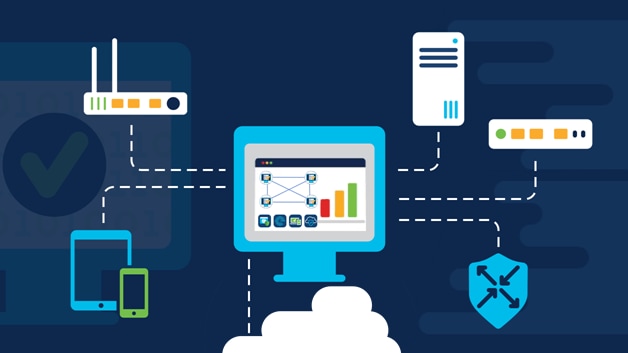Enterprise networking architecture
What does an enterprise network comprise?
While an enterprise network needs to deliver end-to-end services to users, things, and applications, it may consist of separate but connected constituent domains. Typically, each constituent network is designed, provisioned, and optimized for its own purpose and business objectives. Constituent network types include:
- Campus, branch, and Internet of Things (IoT): These networks provide fixed and mobile access to users and things. They are present in all areas of an organization, both in offices and in operational spaces such as manufacturing and warehouse facilities. These networks are optimized for transparent, secure access and high density.
- Data center and hybrid clouds: These networks connect to and among applications, workloads, and data, within on-premises data centers and private and public cloud services. They're optimized for low latency, security, and mission-critical reliability.
- Wide-area networks (WANs): These networks connect facilities, buildings, or campuses to other branches, to data centers, or to cloud resources. They're optimized for user experience and bandwidth efficiency.
How are enterprise networks evolving?
- Providing a foundation for the modern digital enterprise: Increasingly, networks are expected to improve security, enhance user experience, and support many devices performing essential business tasks. Well-designed enterprise networks support a variety of users, devices, smart things, and applications to provide consistent assured service.
- Using network controllers: As the command and control centers of modern enterprise networks, controllers orchestrate all functions of the network. They perform tasks such as translating business objectives into policies, automating network device operations, performance monitoring, and troubleshooting.
- Expanding scope: As the number of network transactions originating or terminating outside of traditional corporate perimeters increases--owing to trends such as expansion to multiple public clouds, mobility, and working from home--the network needs to extend visibility, control, and security to wherever users, things, and applications are located.
- Integrating enterprisewide: Enterprises are now adopting a holistic, open networking strategy that integrates across constituent network domains and with applications and IT systems. Such integrations enable consistent performance, streamlined operations, improved compliance, and security enforcement throughout the organization.
